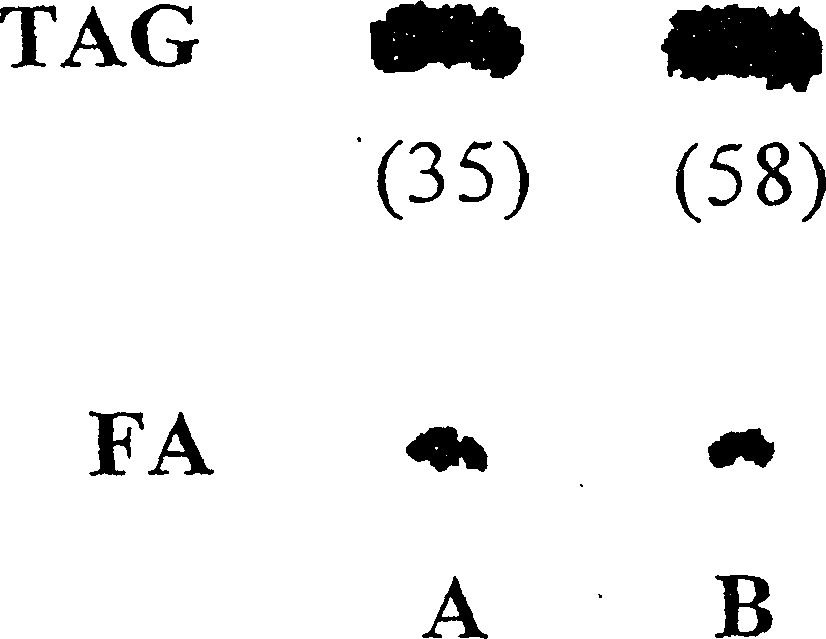Use of a class of enzymes and their encoding genes to increase the oil content in transgenic organisms
A transgenic and biological technology, applied in the fields of application, genetic engineering, plant genetic improvement, etc., can solve the problem of not explaining Are1 and so on
- Summary
- Abstract
- Description
- Claims
- Application Information
AI Technical Summary
Problems solved by technology
Method used
Image
Examples
Embodiment 1
[0031] SEQ ID NO.2: Amino acid sequence of Saccharomyces cerevisiae open reading frame YCR048W. Example Example 1 - Reduced triacylglycerol accumulation in yeast cells lacking the ARE1 gene Materials and methods
[0032] yeast strain. The yeast strain used in this study was congenic to the W303-1A (Thomas and Rothstein, 1989) background. By making two strains SCY60 (MATaare1-Δ::HIS3 ade2-1 can1-100 leu2-3, 112 trp1-1 ura3-1) and SCY61 (MATaare2-Δ::LEU2 ADE2 can1-100 his3-11, 15 trp1- 1 ura3-1) (Yang et al., 1996) were crossed, followed by separation of tetrads, resulting in the are1 mutant H1111 with the genotype MATαare1-Δ::HIS3 ADE2can1-100 leu2-3, 112 trp1-1 ura3-1. As a wild-type control, we used SCY62 (MATa ADE2 can1-100 his3-11, 15 leu2-3 trp1-1 ura3-1) (Yang et al., 1996). Using the lithium acetate method, through a series of yeast transformations, yeast mutants with disrupted ARE1 genes in YNR008w and YOR245c encoding yeast DAGAT B and PDAT, respectively, were cons...
PUM
 Login to View More
Login to View More Abstract
Description
Claims
Application Information
 Login to View More
Login to View More - R&D
- Intellectual Property
- Life Sciences
- Materials
- Tech Scout
- Unparalleled Data Quality
- Higher Quality Content
- 60% Fewer Hallucinations
Browse by: Latest US Patents, China's latest patents, Technical Efficacy Thesaurus, Application Domain, Technology Topic, Popular Technical Reports.
© 2025 PatSnap. All rights reserved.Legal|Privacy policy|Modern Slavery Act Transparency Statement|Sitemap|About US| Contact US: help@patsnap.com


